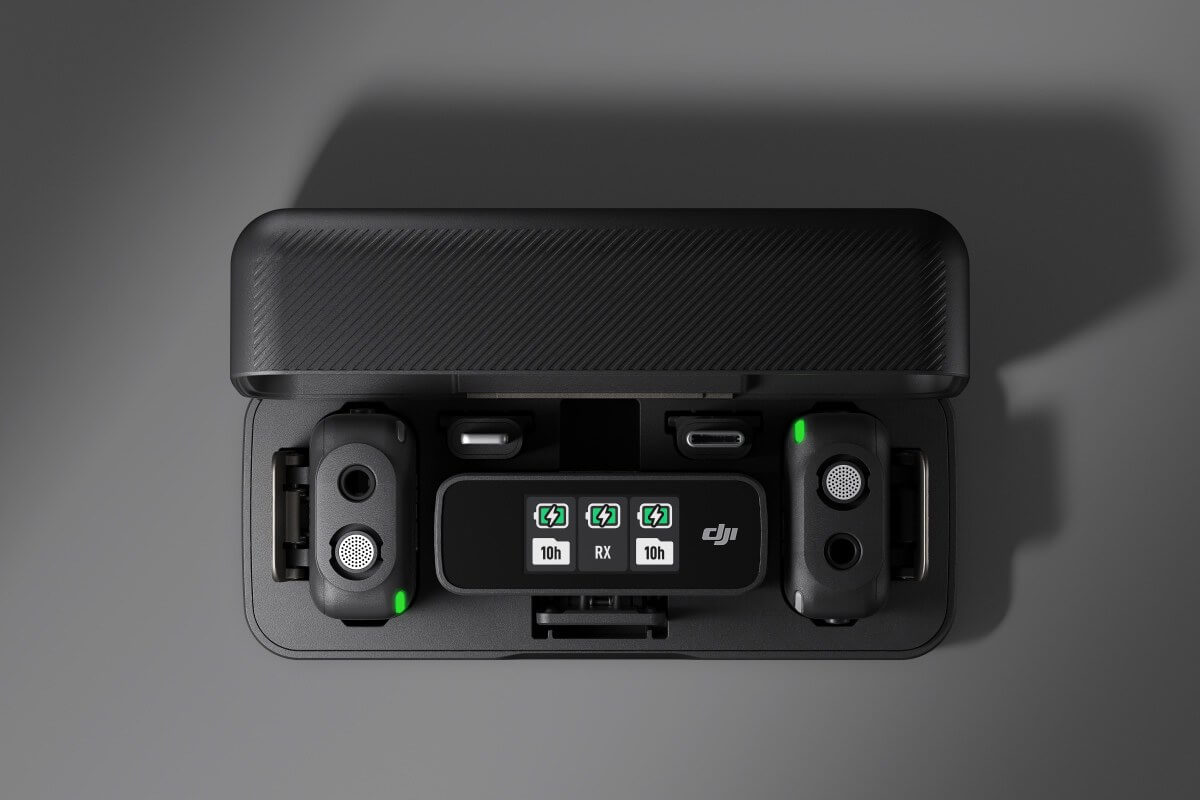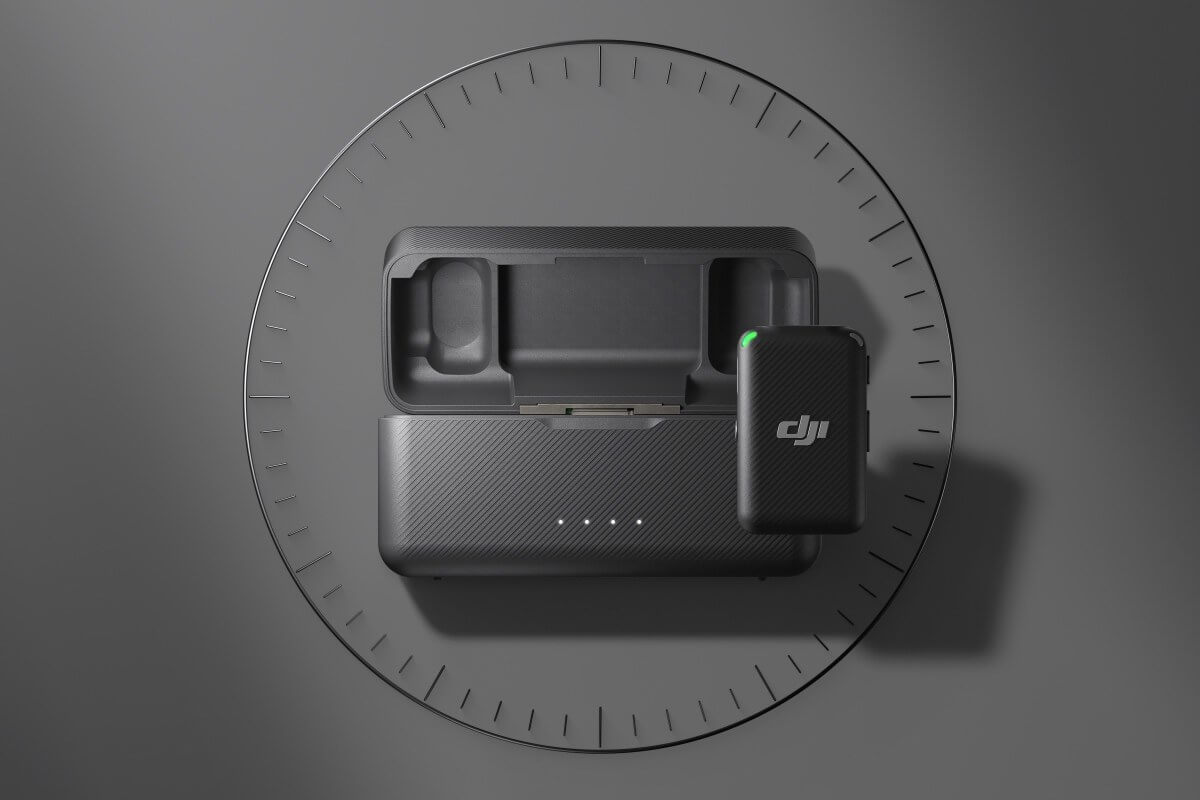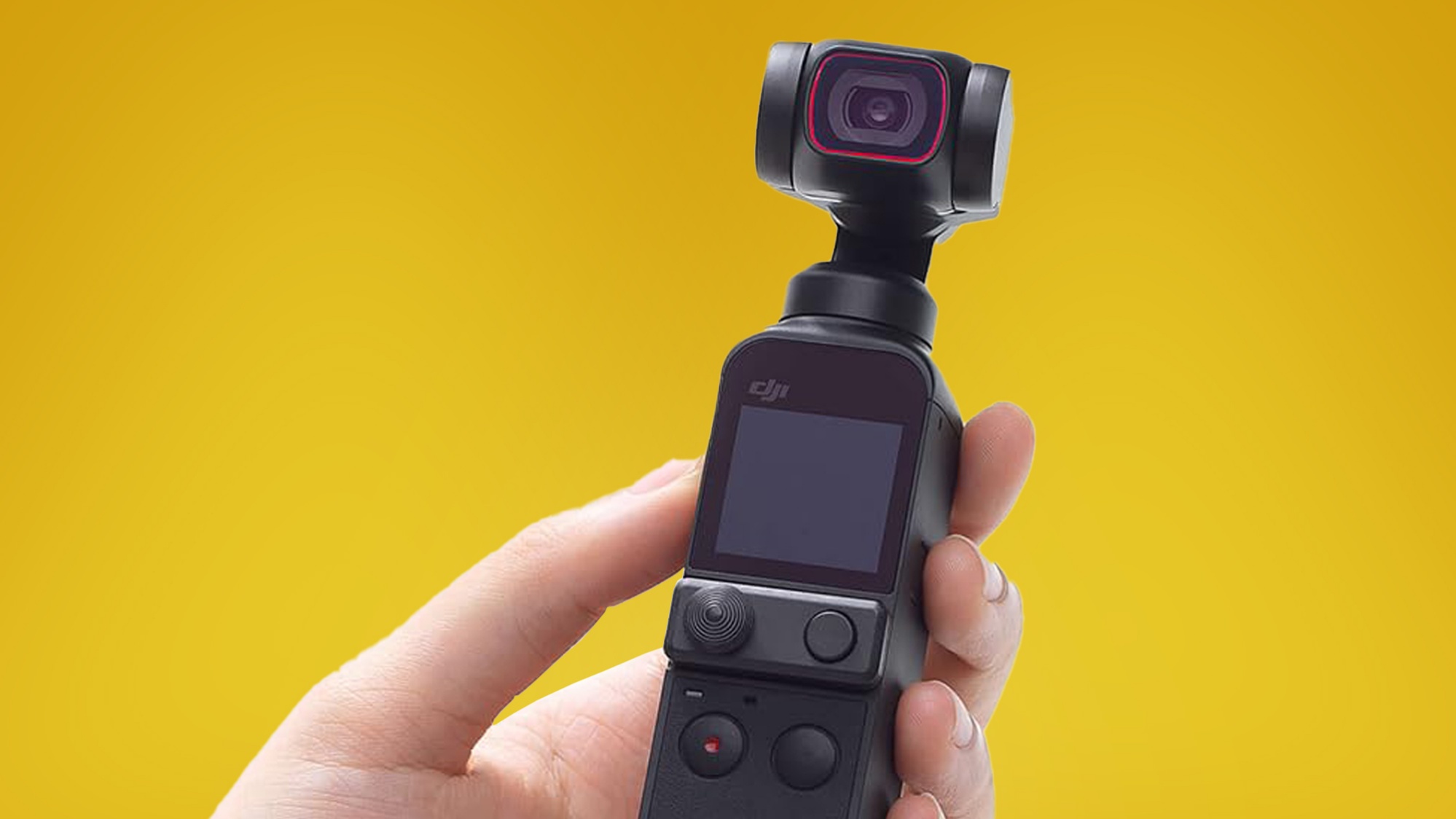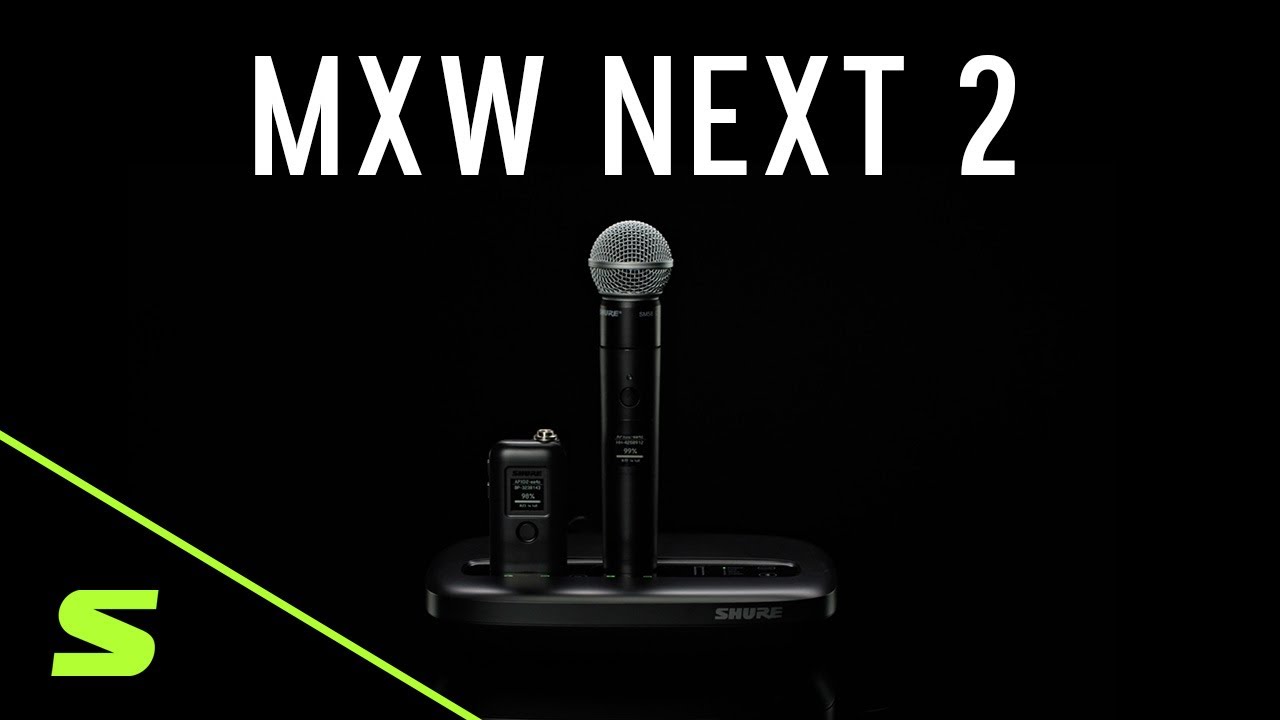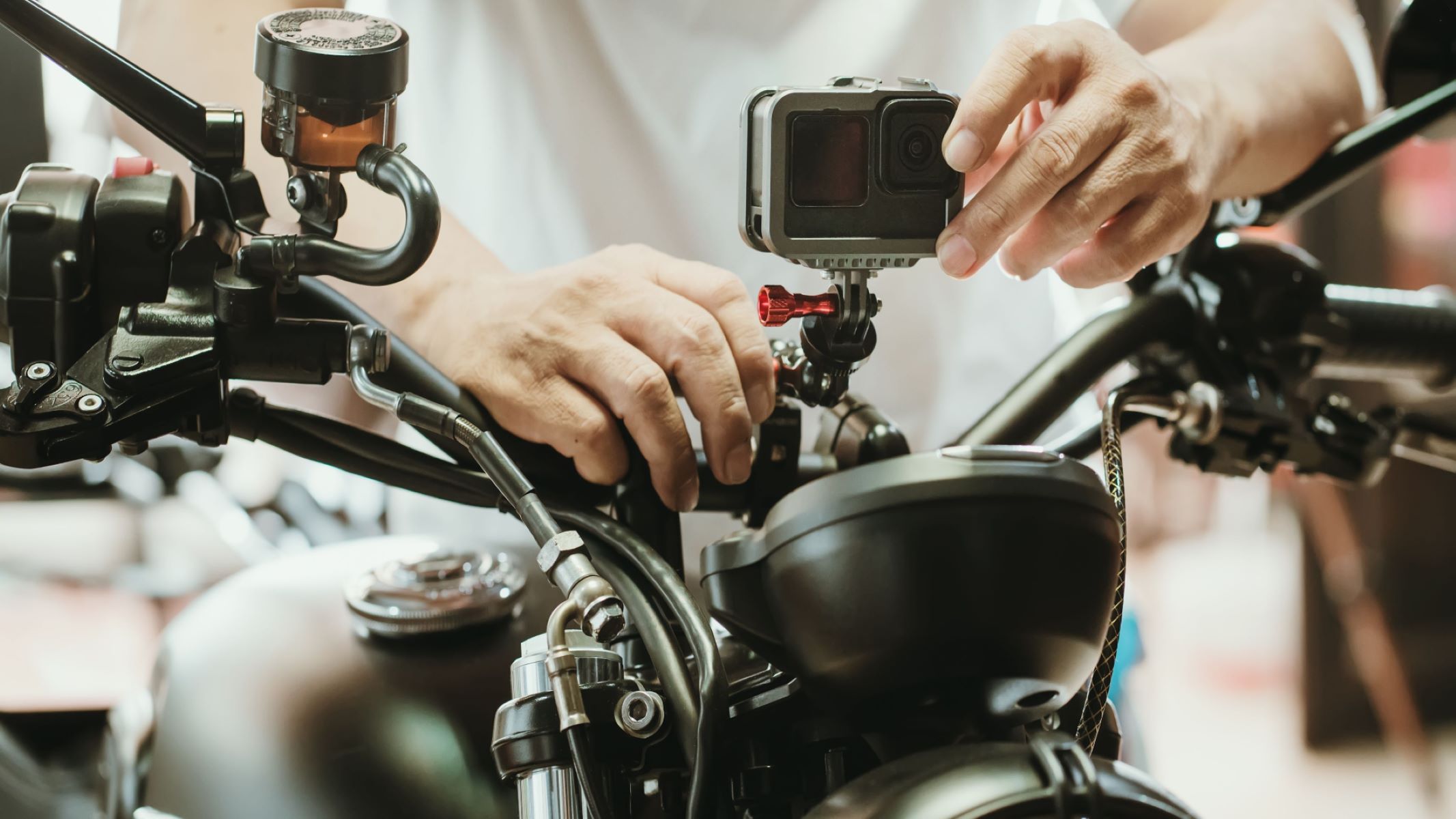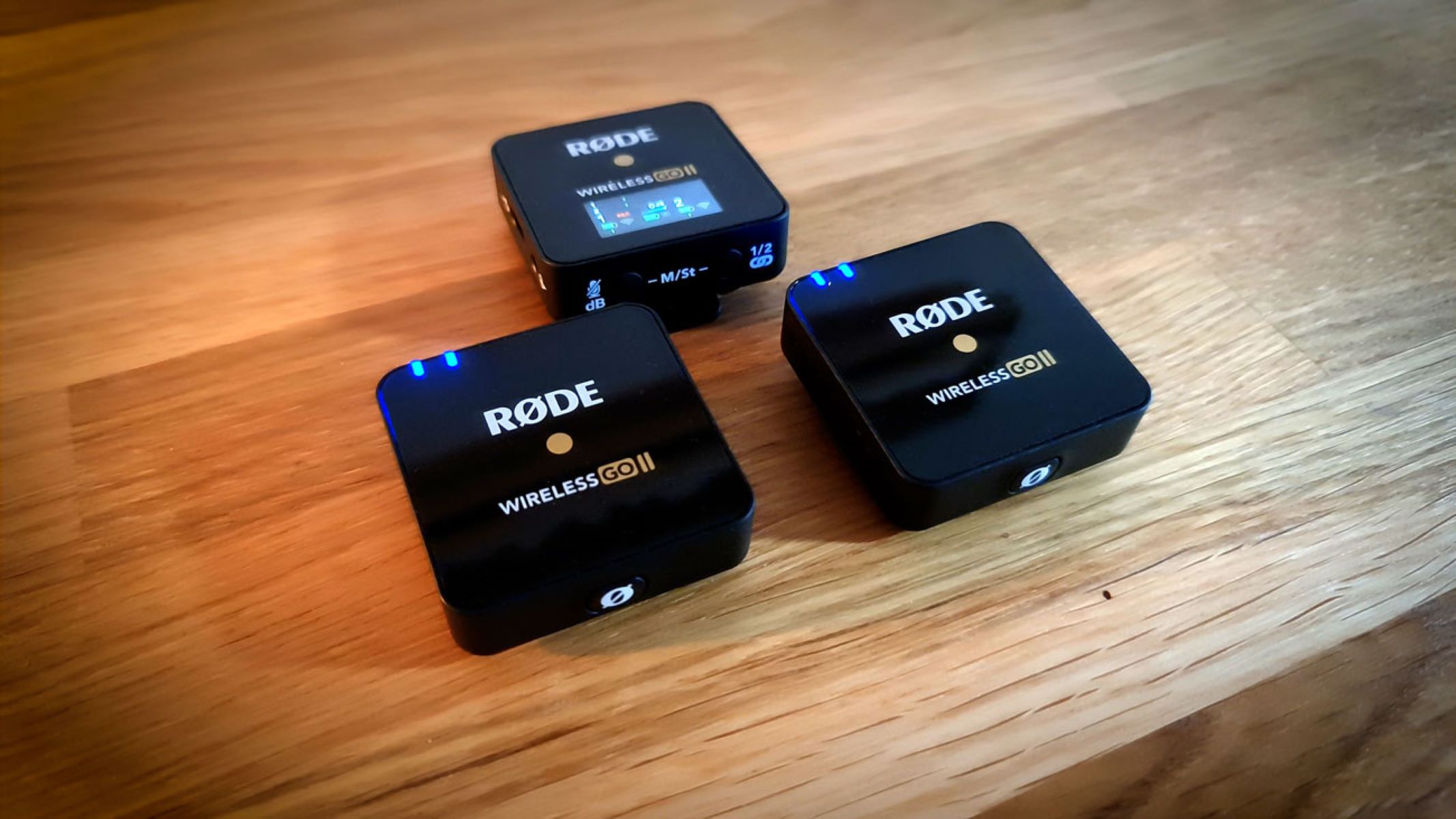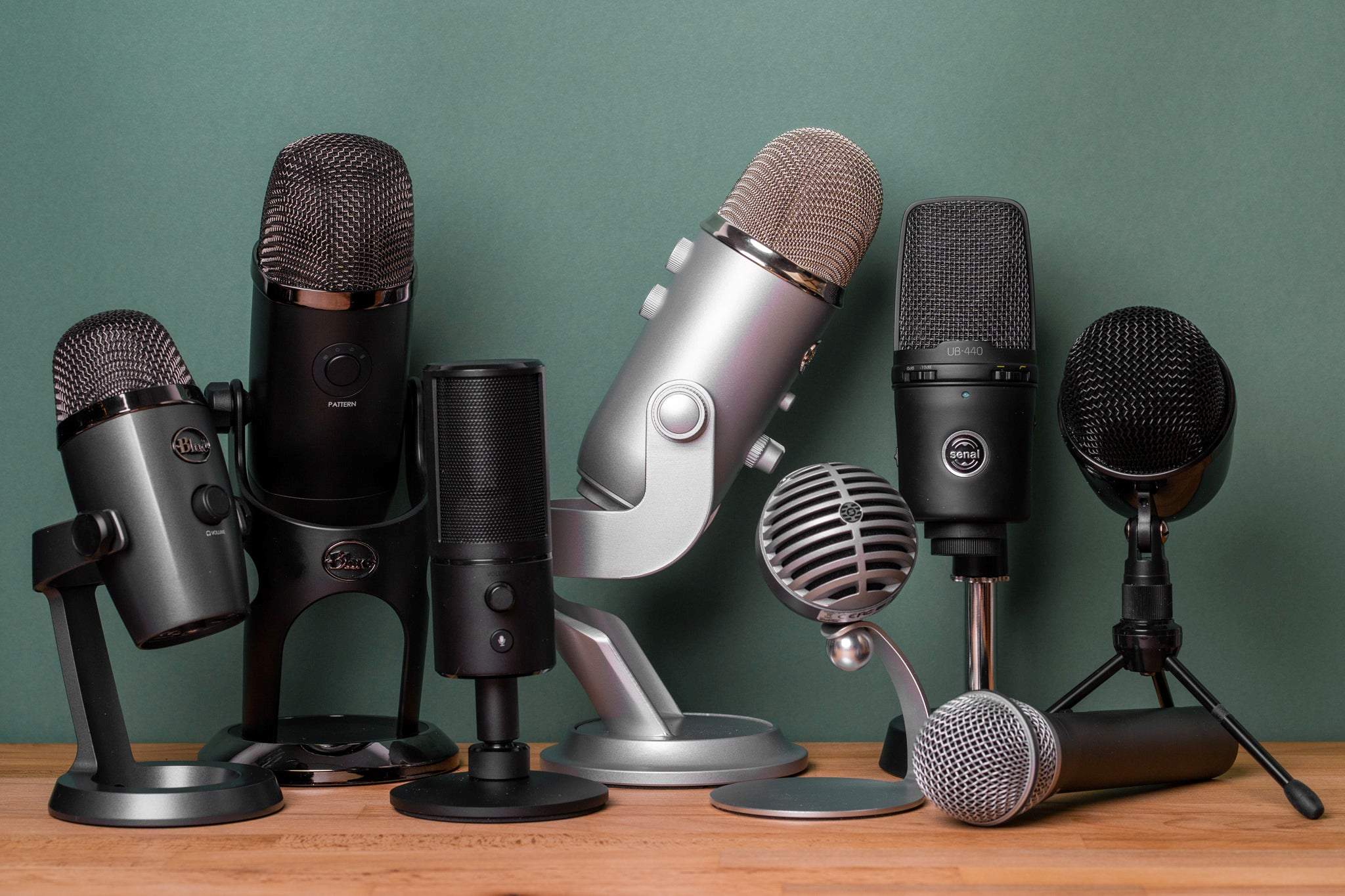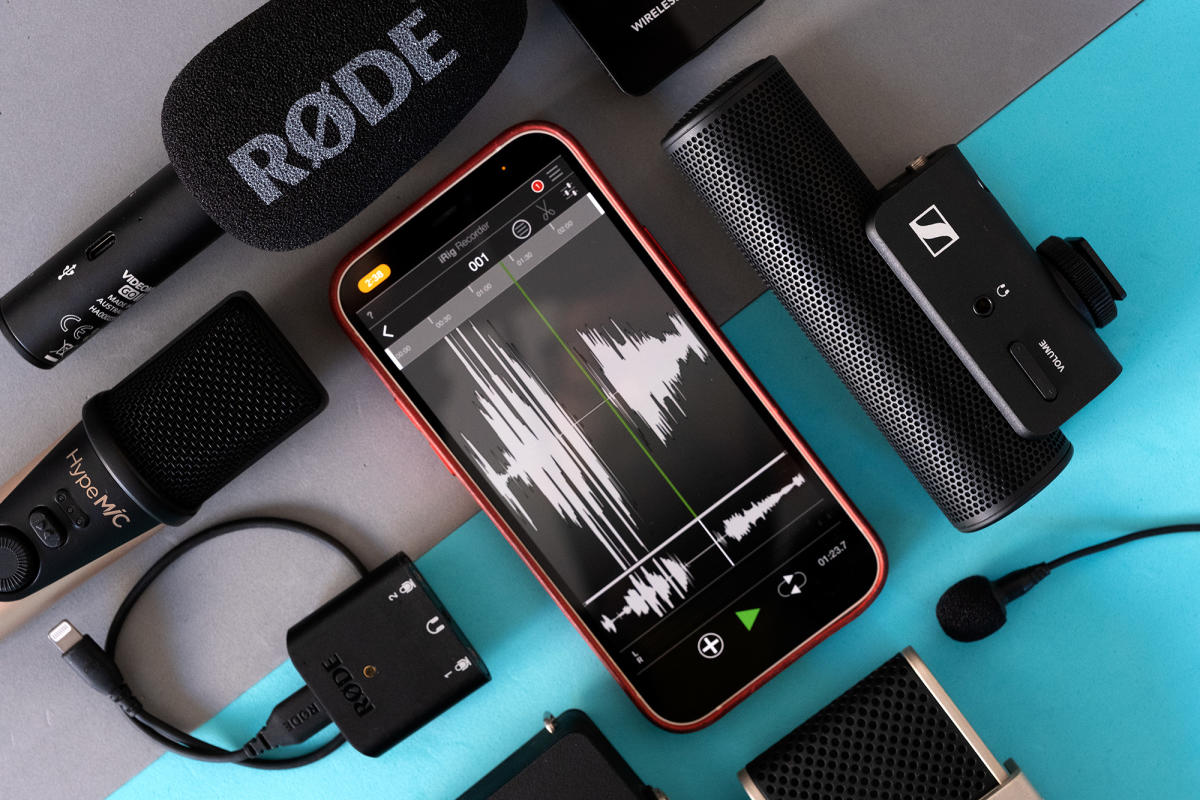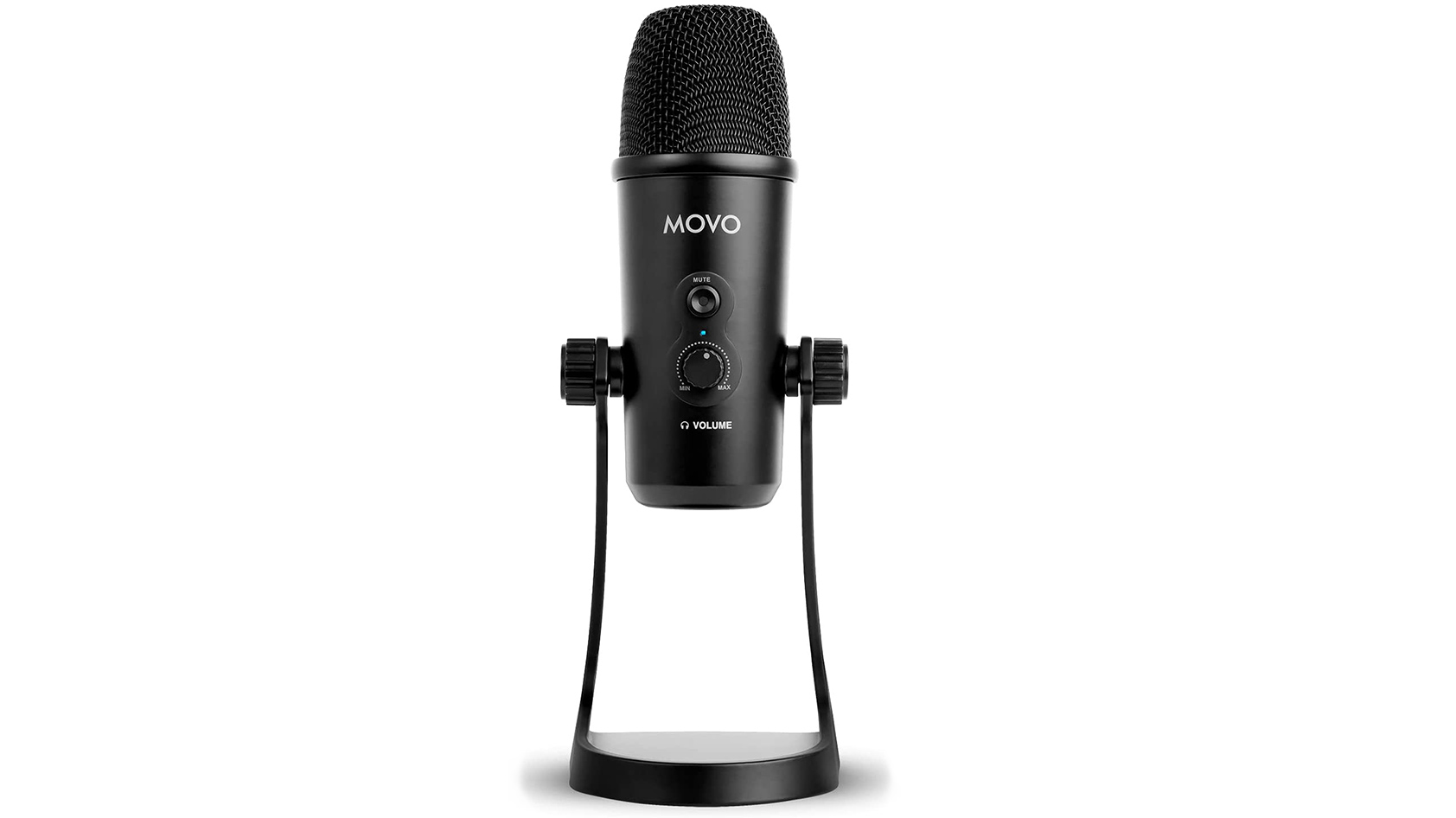Introduction
Looking to elevate the audio quality in your DJI videos? Look no further than the DJI Mic. This handy device is designed to seamlessly integrate with your DJI drones, cameras, and other compatible devices to capture crystal clear audio. Whether you’re a professional videographer or an enthusiast capturing stunning footage, using a DJI Mic can make a world of difference in the overall production value of your videos.
Nowadays, high-quality audio is just as important as stunning visuals. The DJI Mic offers a simple and effective solution to enhance the sound quality of your recordings, allowing you to create captivating videos that truly stand out from the crowd.
In this guide, we’ll explore the basics of using a DJI Mic and provide you with some useful tips and tricks to ensure you record top-notch audio every time. From connecting the mic to adjusting its settings, we’ve got you covered. So let’s dive in and unleash the full potential of your DJI Mic!
Why Use a DJI Mic
When it comes to creating professional-grade videos, audio quality is just as crucial as the visuals. While the built-in microphones on devices like drones and cameras can capture sound, they often fall short when it comes to delivering the clarity and richness desired in the final product. That’s where the DJI Mic comes in.
The DJI Mic is specifically designed to deliver high-quality audio recordings, ensuring every sound is captured with precision. By using the DJI Mic, you can enhance the overall audio experience of your videos and provide your audience with a more immersive and engaging viewing experience.
One of the key benefits of using a DJI Mic is its ability to reduce background noise and improve sound isolation. This is especially useful when recording outdoors or in noisy environments. The advanced technology built into the DJI Mic helps to filter out unwanted noise, allowing your subject’s voice or other important sounds to shine through.
Additionally, the DJI Mic offers superior directional capabilities. With its focused pickup pattern, it can effectively capture sound from specific directions, ensuring that the intended audio is clear and prominent. This is particularly advantageous in scenarios where you want to capture the dialogue or other sounds from a specific source while minimizing background noise or distractions.
Another advantage of using a DJI Mic is its versatility. It is compatible with a wide range of DJI products, including drones, cameras, and even smartphones. This means that whether you’re capturing aerial footage, vlogging on the go, or shooting a professional-grade video, you can easily connect the DJI Mic to your device and elevate your audio recordings to the next level.
In summary, using a DJI Mic can significantly enhance the audio quality of your videos, providing a more immersive experience for your audience. Its ability to reduce background noise, improve sound isolation, and offer superior directional capabilities make it an essential tool for any videographer or content creator. So, if you’re looking to take your videos to new heights, consider adding a DJI Mic to your toolkit.
Getting Started with Your DJI Mic
Now that you have your DJI Mic in hand, let’s dive into getting started with this powerful audio recording tool. Follow these simple steps to ensure a seamless setup and start capturing professional-grade audio.
- First and foremost, make sure your DJI Mic is fully charged. Connect the included USB cable to the mic and plug the other end into a power source. While charging, you’ll see a red LED light indicator, which will turn green once the mic is fully charged.
- Next, identify the appropriate port on your device to connect the DJI Mic. This may vary depending on the device you are using. For example, if you’re using a DJI drone, you’ll find the mic port on the side of the drone’s camera. If you’re using a camera or smartphone, consult the device’s user manual or check for a dedicated mic input port.
- Once you’ve located the mic port, gently insert the 3.5mm audio jack of the DJI Mic into the port. Ensure a secure connection to avoid any audio interference or disconnections during recording.
- Once the DJI Mic is connected to your device, power on the mic by pressing and holding the power button until the LED light turns blue. This indicates that the mic is powered on and ready to use.
- Before you start recording, it’s important to adjust the settings of your device to ensure it recognizes the DJI Mic as the audio source. Depending on the device you’re using, you may need to go into the audio settings menu and select the external microphone as the input source. Consult the user manual or online guides for your specific device for detailed instructions on how to do this.
- With the DJI Mic connected and the settings adjusted, you’re now ready to start recording. Test the audio by speaking into the mic and monitoring the levels on your device. Make any necessary adjustments to the volume levels to achieve the desired audio quality.
- When you’re done recording, simply power off the DJI Mic by pressing and holding the power button until the LED light turns off. Disconnect the audio jack from your device and store the DJI Mic in a safe place to protect it from damage.
By following these step-by-step instructions, you’ll be able to get your DJI Mic up and running in no time. Remember to consult the user manual provided with your mic for any additional details or troubleshooting tips specific to your device model.
Connecting the DJI Mic to Your Device
Connecting the DJI Mic to your device is a straightforward process that allows you to start recording high-quality audio in no time. Follow these simple steps to ensure a seamless connection and begin capturing professional-grade sound.
- Identify the appropriate port on your device to connect the DJI Mic. Depending on the device you are using, this may be a dedicated microphone input port or a USB-C/3.5mm audio jack.
- If your device has a dedicated microphone input port, simply insert the 3.5mm audio jack of the DJI Mic into the port. Ensure a secure connection to avoid any audio interference or disconnections during recording.
- If your device only has a USB-C or 3.5mm audio jack, or if you’re using a device that requires a USB connection, you’ll need to use an appropriate adapter or cable. Connect the DJI Mic to the adapter or cable and then plug it into the corresponding port on your device.
- Once the DJI Mic is connected to your device, ensure that the device recognizes it as the audio input source. Depending on your device’s operating system, you may need to adjust the audio input settings. This can usually be done through the device’s settings or control panel.
- Test the connection by speaking into the DJI Mic and monitoring the audio levels on your device. If you see the levels moving or hear the sound clearly, then the DJI Mic is successfully connected.
- Adjust the volume levels on your device, if necessary, to achieve the desired audio quality. It’s important to find the right balance to ensure clear and crisp sound without any distortion.
- With the DJI Mic successfully connected to your device and the settings adjusted, you’re now ready to start recording high-quality audio for your videos or other projects.
Keep in mind that the specific steps to connect the DJI Mic may vary depending on the device you’re using. It’s always recommended to consult your device’s user manual or online guides for detailed instructions tailored to your specific model.
By following these simple steps, you’ll be able to connect your DJI Mic to your device and unleash its full potential in capturing outstanding audio for your recordings and projects.
Adjusting Settings on the DJI Mic
The DJI Mic offers a range of adjustable settings that allow you to fine-tune your audio recordings and achieve optimal sound quality. By familiarizing yourself with these settings and making appropriate adjustments, you can ensure that your recordings capture the desired audio characteristics. Here’s a guide on how to adjust the settings on the DJI Mic:
- Gain Control: The gain control setting allows you to adjust the microphone sensitivity. Higher gain levels amplify the sound, which is useful when recording in quieter environments. Lower gain levels are ideal for reducing distortion when recording in louder environments. Experiment with different gain levels to find the setting that best matches your recording conditions.
- Directional Mode: The DJI Mic offers different directional modes, such as omnidirectional and cardioid. Omnidirectional mode captures sound from all directions, while cardioid mode focuses on sound sources in front of the microphone. Select the appropriate mode based on your recording requirements. For example, if you’re focusing on capturing audio from a specific subject, cardioid mode can help isolate their sound and minimize background noise.
- Monitoring: The DJI Mic allows you to monitor your audio in real-time. This feature enables you to listen to what the microphone is capturing, ensuring that you’re getting the desired sound quality. Adjust the monitoring volume to a comfortable level, so you can accurately assess the audio while recording.
- Low-Cut Filter: The low-cut filter helps reduce low-frequency background noise, such as wind or rumble. This feature can be particularly useful when recording outdoors or in environments prone to unwanted low-frequency sounds. Experiment with the low-cut filter to find the right balance between reducing noise and preserving the natural sound of your subject.
- Headphone Output: Many DJI Mic models come equipped with a dedicated headphone output. This allows you to connect your headphones directly to the mic and monitor the audio in real-time with enhanced clarity. Use this feature to ensure that your audio is being recorded exactly as you intend it to be captured.
To adjust these settings, refer to the user manual or the accompanying DJI Mic app, if available. The app may provide additional functionality and control over the microphone settings, allowing you to customize your audio recordings further.
Remember, experimenting with different settings and listening to the resulting audio can help you achieve the desired sound for your specific recording scenarios. Take the time to understand the capabilities of your DJI Mic and explore its settings to unleash its full potential for capturing high-quality audio.
Tips for Recording High-Quality Audio with the DJI Mic
Recording high-quality audio with the DJI Mic is essential for producing professional-grade videos. Here are some valuable tips to help you achieve the best possible audio results:
- Choose the right location: Selecting an appropriate recording location is crucial. Find a quiet environment away from background noise or other distractions that could negatively impact your audio quality. This will ensure that the focus is on the desired sounds and reduce the need for excessive post-production editing.
- Optimize microphone placement: Position the DJI Mic as close to the subject as possible without obstructing any visuals. This proximity will help capture clear and detailed sound, especially when recording dialogue or specific audio sources. Experiment with mic placement to find the sweet spot for capturing optimal audio.
- Monitor audio levels: Keep an eye on the audio levels while recording. Ensure that the levels do not peak or clip, as this will result in distorted audio. Adjust the gain control settings accordingly to maintain a balanced and clean sound.
- Consider using a windscreen: If you’re recording outdoors or in a windy environment, consider using a windscreen or a furry cover to minimize wind noise. This simple accessory can greatly improve the clarity of your audio by reducing unwanted disturbances caused by wind gusts.
- Control background noise: Although the DJI Mic is designed to minimize background noise, it’s still important to be mindful of your surroundings. Avoid recording in areas with excessive ambient noise, such as traffic, air conditioners, or nearby conversations. If necessary, use soundproofing techniques or record during quieter hours to ensure clean audio.
- Perform a sound check: Before starting your main recording, take a few seconds to do a quick sound check. Speak into the mic at your intended volume level and listen back to ensure that the sound is clear and balanced. Adjust the microphone settings if needed before proceeding with your recording.
- Use headphones: Connect a pair of headphones to the DJI Mic or your recording device to monitor the audio in real-time. This will allow you to catch any issues or unwanted noise and make necessary adjustments on the spot. Monitoring the audio while recording helps ensure you capture the best possible sound.
- Edit and enhance in post-production: While capturing high-quality audio during recording is important, post-production can further enhance your audio. Utilize audio editing software to remove any remaining background noise, adjust levels, and improve overall sound quality. Take the time to fine-tune your audio during the editing process for the best results.
By following these tips, you can maximize the potential of your DJI Mic and record professional-quality audio for your videos. Remember, practice and experimentation are key. Spend time familiarizing yourself with the microphone and its settings to achieve the desired audio results for your specific recording scenarios.
Troubleshooting Common Issues with the DJI Mic
While the DJI Mic is designed to deliver exceptional audio quality, you may encounter some common issues during its use. Here are some troubleshooting tips to help you address and resolve such issues:
- No sound or low volume: If you don’t hear any sound or the volume is significantly low, first check the audio input settings on your recording device. Ensure that the DJI Mic is selected as the input source. Additionally, make sure the microphone is connected securely and the volume levels on both the mic and recording device are appropriately adjusted.
- Interference or static: If you experience interference or static noise, try a different location or reposition the microphone. Interference can be caused by nearby electronic devices, Wi-Fi signals, or power sources. Experiment with different placements to minimize interference. If the issue persists, check for any physical damage to the microphone or cable and consider replacing the cable if necessary.
- Wind noise: When recording outdoors, wind noise can be a common issue. To minimize this, use a windscreen or furry cover over the DJI Mic. These accessories help reduce the impact of wind on the microphone, resulting in cleaner audio. Alternatively, consider using a directional mode that focuses on the desired sound source, reducing the pickup of wind noise.
- Distorted or clipped audio: If your audio sounds distorted or clipped, it may be due to high gain levels or input overload. Lower the gain control on the microphone or reduce the input volume on your recording device to avoid distortion. Monitoring the audio levels during recording can help prevent this issue.
- Poor connectivity: If you’re experiencing intermittent or poor connectivity between the DJI Mic and your device, try disconnecting and reconnecting the microphone. Ensure a secure connection and check for any debris or foreign objects that may be obstructing the audio jack or port. Additionally, clean the connectors and ports to maintain good contact.
- Compatibility issues: Confirm that your DJI Mic is compatible with your recording device. Some devices may require an adapter or specific input settings to work with external microphones. Check the user manual or contact DJI support for compatibility information and recommendations.
- Battery or power issues: If you’re having trouble powering on the DJI Mic or notice reduced battery life, ensure that the microphone is fully charged before use. If the battery drains quickly or doesn’t hold a charge, it may be time to replace the battery. Contact DJI customer support for assistance with battery replacement or any recurring power-related issues.
If you have exhausted these troubleshooting tips and are still experiencing issues with your DJI Mic, it’s recommended to contact DJI customer support for further assistance. They can provide personalized solutions and guide you through resolving any specific issues you may encounter.
Remember, troubleshooting is a normal part of using any audio equipment, and with the right approach, you can overcome these challenges and continue capturing high-quality audio with your DJI Mic.
Conclusion
The DJI Mic is a powerful tool that allows you to capture high-quality audio for your videos and recordings. By integrating seamlessly with DJI drones, cameras, and other compatible devices, the DJI Mic enhances the overall audio experience, making your content more immersive and engaging.
In this guide, we explored the various aspects of using a DJI Mic, from the initial setup to adjusting the microphone settings and troubleshooting common issues. By following the suggested tips, you can optimize your audio recordings and produce professional-grade videos with exceptional sound quality.
Remember to choose an appropriate location, optimize microphone placement, and monitor audio levels to ensure the best possible sound capture. Utilizing additional accessories like windshields can help minimize interference and improve the audio quality, especially when recording outdoors.
If you encounter any issues, refer to the troubleshooting section for solutions to common problems. Feel free to reach out to DJI customer support for further assistance if needed.
With the DJI Mic at your disposal, you have the power to elevate your video production quality by delivering clear and impactful audio. Captivate your audience with immersive soundscapes and create memorable videos that leave a lasting impression.
Now, armed with knowledge and a DJI Mic, go forth and unlock the full potential of your audio recording capabilities. Happy recording!







